Coralroot Bittercress Cardamine bulbifera
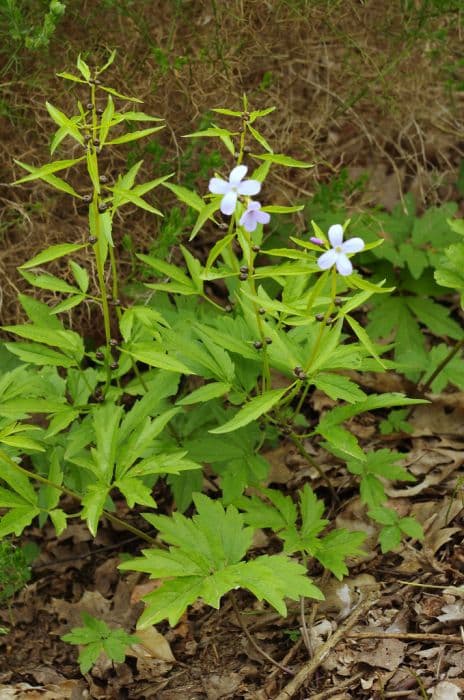
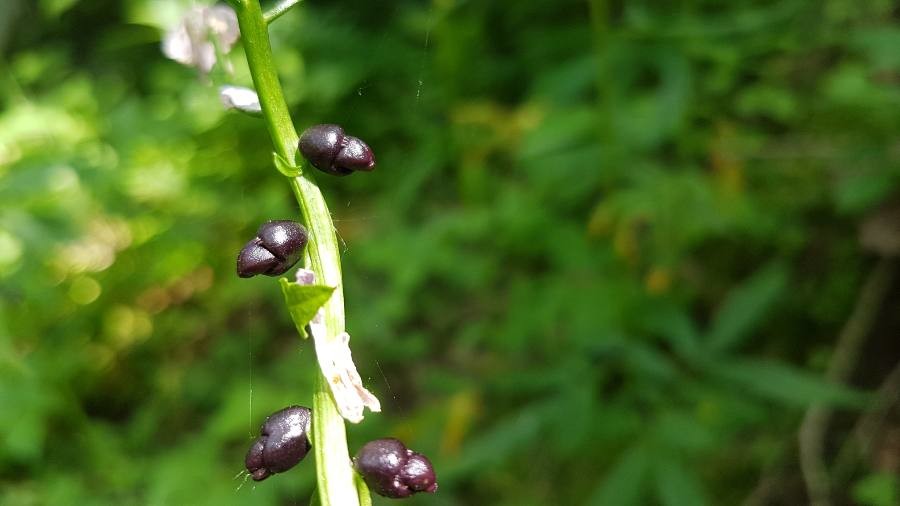
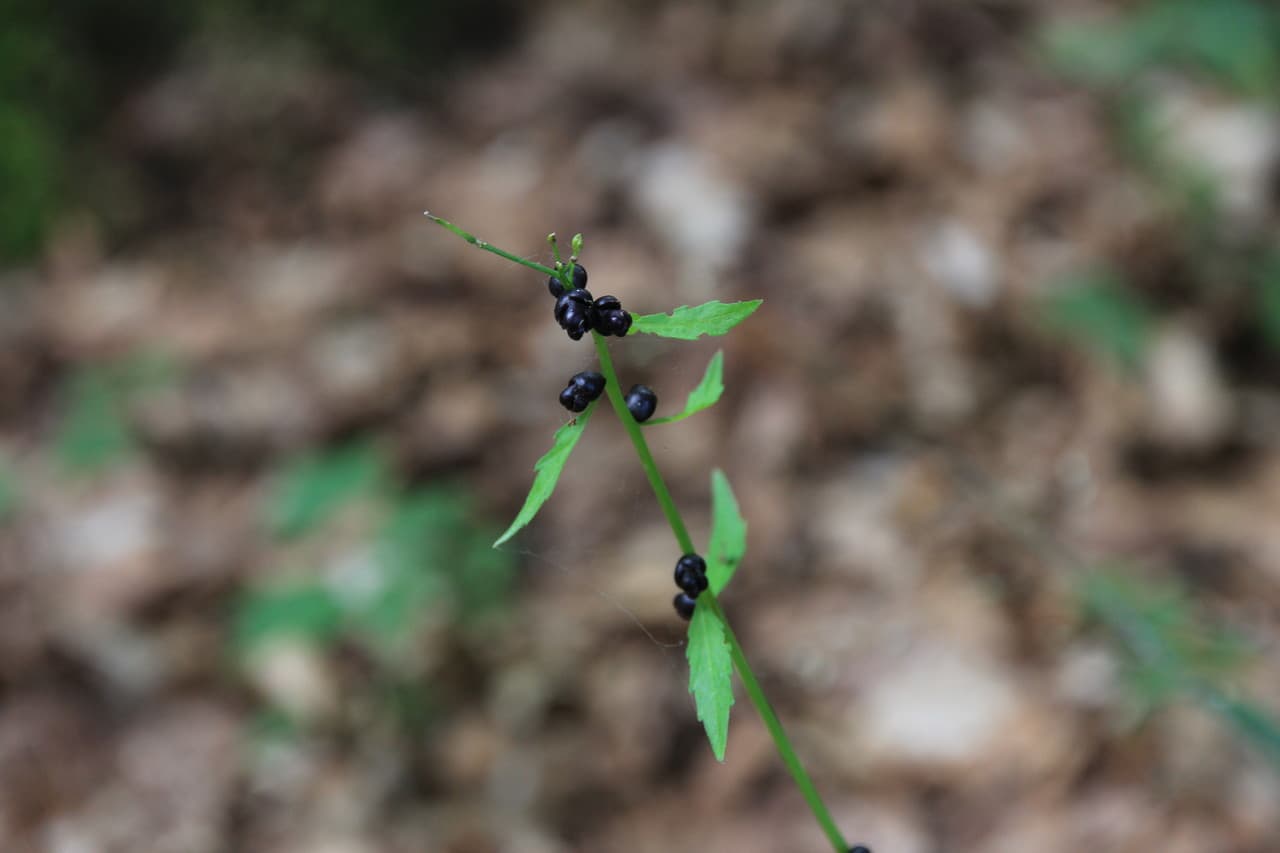
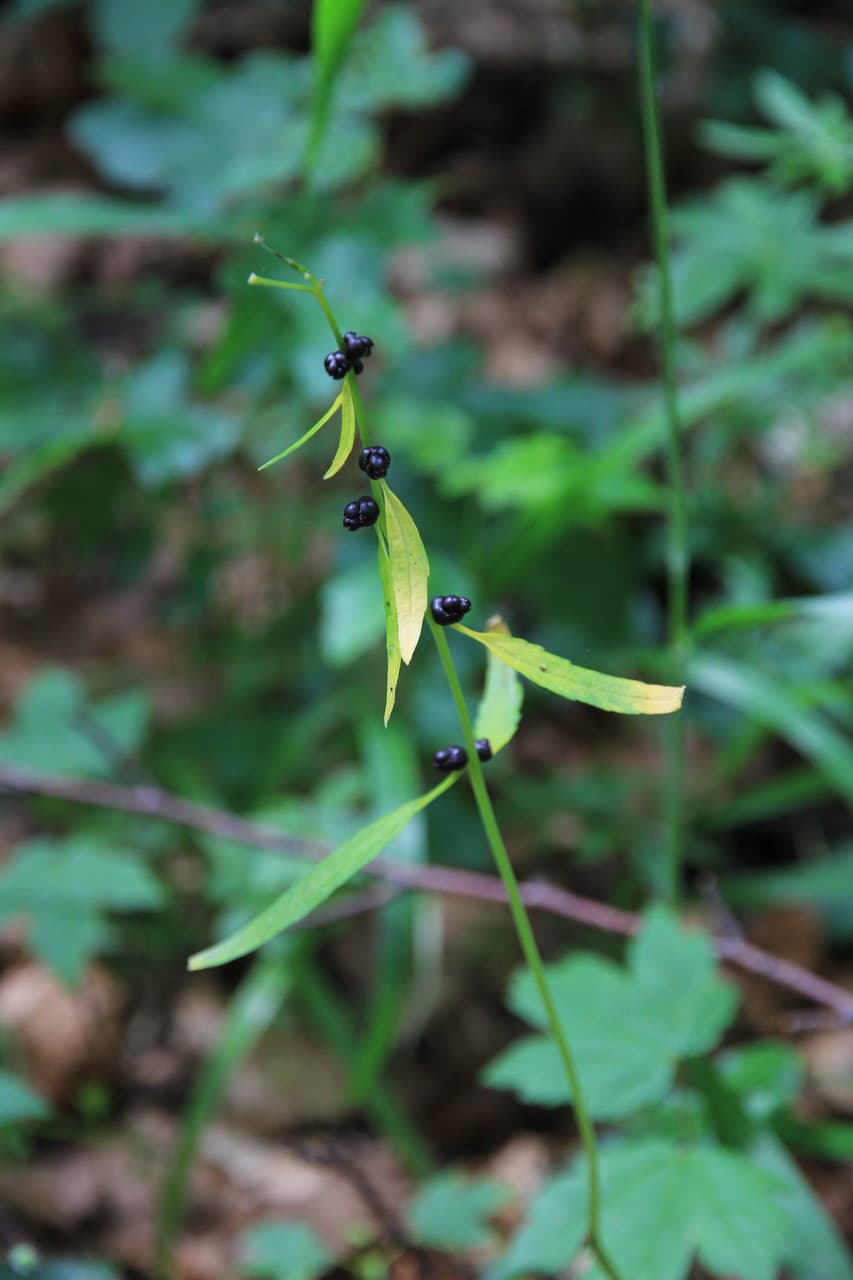
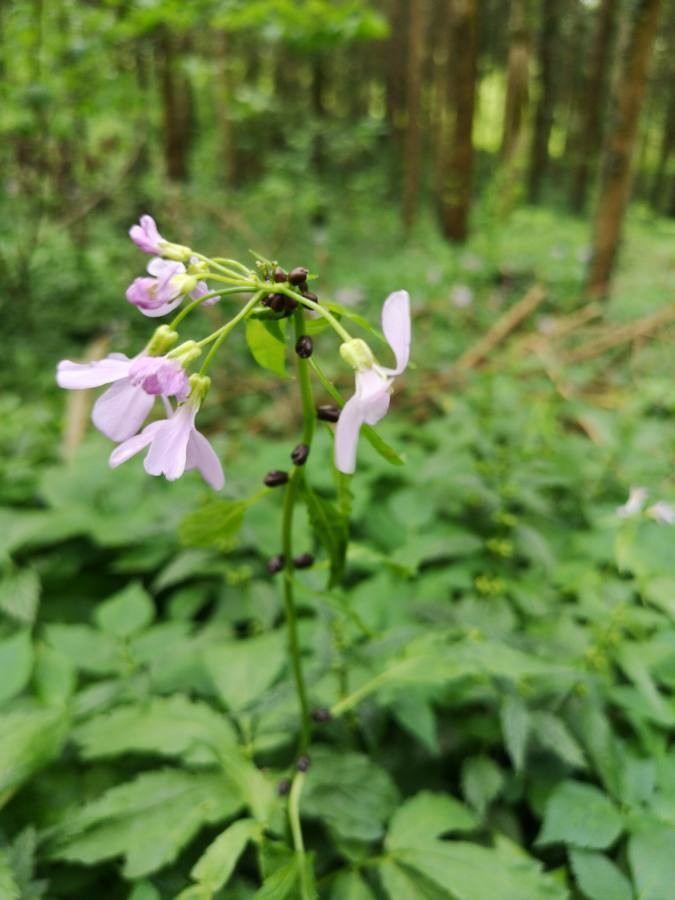
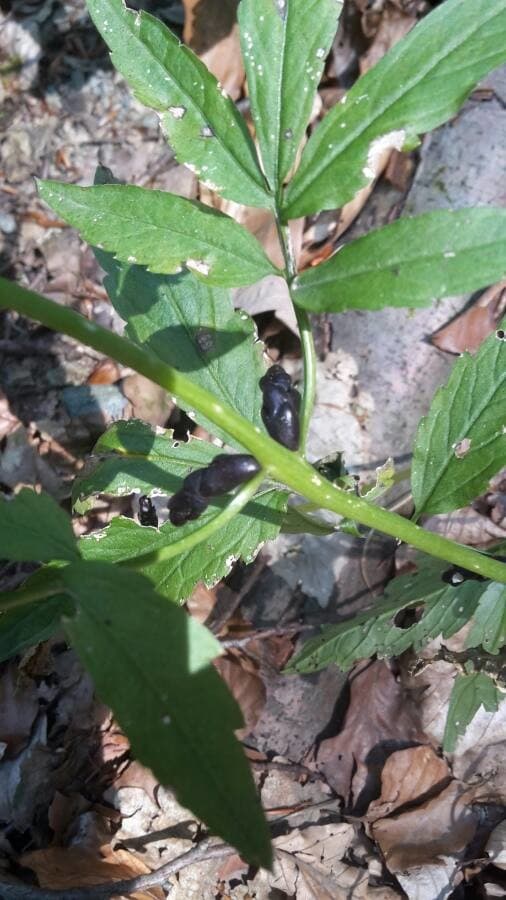
ABOUT
Cardamine bulbifera, commonly known as Coralroot, is a distinctive plant with a charming appearance. The plant primarily showcases a basal rosette of rounded to heart-shaped leaves that are rich green in color. During its blooming period, Coralroot produces slender stalks topped with small lilac to pink flowers. These blossoms are characterized by their four delicate petals forming a cross shape, a typical feature of plants in its family. The stems are smooth and upright, forming a gentle contrast with the foliage below. Coralroot is also notable for its bulbils - small bulb-like growths - which can be found at the bases of the upper leaves on the flowering stem. These bulbils are significant in the plant’s reproduction, as they can fall off and grow into new plants. The overall presentation of Coralroot is quite elegant, making it a beautiful addition to the environments where it naturally occurs.
About this plant
 Names
NamesFamily
Brassicaceae.
Synonyms
Coralroot Bittercress, Coral Root, Bulbous Bittercress, Coralroot.
Common names
Dentaria bulbifera, Cardamine bulbosa
 Toxicity
ToxicityTo humans
The Cardamine bulbifera, commonly known as Coralroot, is not typically known for being poisonous to humans. However, it is important to note that many plants can cause adverse reactions in some individuals due to allergies or sensitivities. Ingesting any part of unknown plants should generally be avoided due to the potential of unexpected toxicity. If someone were to ingest Coralroot and subsequently experience symptoms such as gastrointestinal discomfort, it is advisable to seek medical attention.
To pets
Cardamine bulbifera, known as Coralroot, is not widely recognized for being toxic to pets. However, the same cautions that apply to humans should be considered for pets. Not all plants' effects on pets are well documented, and there may be variability in how different animals react to certain plants. If a pet ingests Coralroot and shows signs of distress, such as vomiting, diarrhea, or changes in behavior, it is important to contact a veterinarian promptly. It is always best to err on the side of caution and prevent pets from ingesting plants that are not certified as safe for them.
 Characteristics
CharacteristicsLife cycle
Perennials
Foliage type
Deciduous
Color of leaves
Green
Flower color
Purple
Height
1-2 feet (30-60 cm)
Spread
1 foot (30 cm)
Plant type
Herb
Hardiness zones
5
Native area
Europe
Benefits
 General Benefits
General Benefits- Edible Use: The leaves of Coralroot (Cardamine bulbifera) can be consumed in salads or cooked as a green vegetable, offering a source of nutrition.
- Gardening Interest: Coralroot has attractive foliage and small, delicate flowers that can add aesthetic value to shade gardens.
- Wildlife Attraction: The flowers of Coralroot may attract pollinators such as bees, which can help pollinate other plants in the vicinity.
- Soil Improvement: Like other members of the family Brassicaceae, Coralroot can contribute to soil health through its natural life cycle.
- Biodiversity Support: As a native species in some areas, Coralroot can play a role in supporting local ecosystems and preserving biodiversity.
 Medical Properties
Medical PropertiesThis plant is not used for medical purposes.
 Air-purifying Qualities
Air-purifying QualitiesThis plant is not specifically known for air purifying qualities.
 Other Uses
Other Uses- Cardamine bulbifera, commonly known as Coralroot, can be used as a natural dye source. The entire plant contains pigments that can impart a range of colors to textiles and other materials.
- The plant is sometimes used in ornamental gardens for its attractive foliage and delicate flowers that bloom in the spring, adding aesthetic value.
- Due to its bulbils, Coralroot can be an interesting educational tool in schools to demonstrate vegetative propagation and the life cycle of plants.
- Coralroot is considered by some as a culinary curiosity, with the bulbils reportedly being edible and offering a sharp, radish-like taste.
- In some traditions, the plant has been used as part of rituals or as a symbol due to its unique reproductive method and appearance, indicative of renewal and growth.
- The plant may serve as an indicator species in ecosystem monitoring, as its presence and health can reflect the condition of its environment.
- For naturalists and photographers, Coralroot provides a subject of interest due to its seasonal changes and the challenges of capturing its beauty in different stages.
- Its bulbils can be studied for their potential use in soil stabilization projects because of their ability to propagate and cover patches of land.
- The flowering of Coralroot can be used to educate about pollinator attraction strategies, as some species of Cardamine are known to attract specific insects.
- Enthusiasts of wild foods may experiment with incorporating the leaves of Coralroot into salads for a peppery addition, similar to the use of related cress species.
Interesting Facts
 Feng Shui
Feng ShuiThe Coralroot is not used in Feng Shui practice.
 Zodiac Sign Compitability
Zodiac Sign CompitabilityThe Coralroot is not used in astrology practice.
 Plant Symbolism
Plant Symbolism- Renewal: Cardamine bulbifera, commonly known as Coralroot, often emerges in the spring, symbolizing new beginnings and the renewal of nature after winter.
- Purity: The delicate and often white flowers of Coralroot can be associated with purity and innocence.
- Adaptability: As Coralroot can grow in various conditions, it can symbolize resilience and the ability to adapt to changing environments.
 Water
WaterThe Coralroot (the common name for Cardamine bulbifera) prefers consistently moist soil, without being waterlogged. Watering should be done when the top inch of soil feels dry to the touch, which typically means watering once a week. Depending on the size of the pot and the environmental conditions, this could range from 16 to 32 onzes of water each time. It's crucial to avoid over-watering, as this can lead to root rot. During the winter months, when the plant is dormant, reduce watering frequency.
 Light
LightCoralroot thrives in partially shaded conditions, mimicking its natural woodland habitat. It should be placed in a spot where it can receive dappled sunlight, away from direct and harsh sunlight which can damage its leaves. A north-facing or east-facing window, where the light is bright yet indirect, would be an ideal location for this plant.
 Temperature
TemperatureCoralroot does well in average room temperatures between 60 and 75 degrees Fahrenheit. It can survive minor drops to about 50 degrees Fahrenheit, but should not be exposed to temperatures below that, as it can damage the plant. It's comfortable in the same temperature ranges typical for most indoor environments.
 Pruning
PruningCoralroot requires minimal pruning, primarily to remove any yellowed or dead foliage to maintain its appearance and health. This can be done as needed throughout the year. The best time for more thorough pruning is in the late winter or early spring before new growth begins, which can encourage bushier growth and rejuvenate an older plant.
 Cleaning
CleaningAs needed
 Soil
SoilCoralroot Cardamine enjoys a well-draining soil mix with high organic content. The ideal soil pH for Coralroot Cardamine should be slightly acidic to neutral, ranging from 6.0 to 7.0. Mixtures with leaf mold or compost, perlite, and peat are beneficial for this woodland perennial.
 Repotting
RepottingCoralroot Cardamine does not require frequent repotting. It is typically repotted only when it has outgrown its current container, which may take several years. Repotting every 2-3 years should be sufficient.
 Humidity & Misting
Humidity & MistingCoralroot Cardamine thrives in moderate to high humidity levels, ideally around 50-70%. It prefers a moist environment, much like its natural woodland habitat. Avoid placing it in overly dry conditions.
 Suitable locations
Suitable locationsIndoor
Provide dappled light, moist soil, and regular misting.
Outdoor
Plant in partial shade, in moist, rich soil.
Hardiness zone
4-7 USDA
 Life cycle
Life cycleCoralroot Cardamine, also known as Cardamine bulbifera, begins its life cycle as a dormant bulb, which sprouts and grows into a leafy shoot in the early spring. The leaves develop and the plant soon blooms, producing small, delicate purple or pink flowers typically between April and June. After pollination, which is often aided by insects, the plant produces seed pods that split open when mature to release the seeds. In addition to seed production, Coralroot Cardamine can also reproduce vegetatively through bulbils that form in the leaf axils, which can fall to the ground and grow into new plants. As the growing season ends, the above-ground part of the plant dies back, and the bulbs or bulbils enter a period of dormancy during the colder months. The cycle recommences the following spring when temperatures rise and the bulbs sprout anew.
 Propogation
PropogationPropogation time
Spring to early summer
The most popular method of propagation for Coralroot (Cardamine bulbifera) involves the use of its unique bulbils, which are small bulb-like structures that form in the leaf axils. During late spring to early summer, these bulbils mature and can be collected. They should then be immediately planted in moist, fertile soil at a shallow depth, just enough to cover the bulbil, typically less than an inch (about 2.5 centimeters). In a suitable environment with partial shade, the bulbils will germinate and develop a root system, eventually growing into new plants. This method is very straightforward and does not require complex equipment or techniques, making it accessible for most gardeners. It's important not to let the bulbils dry out before planting, as this can decrease their viability.



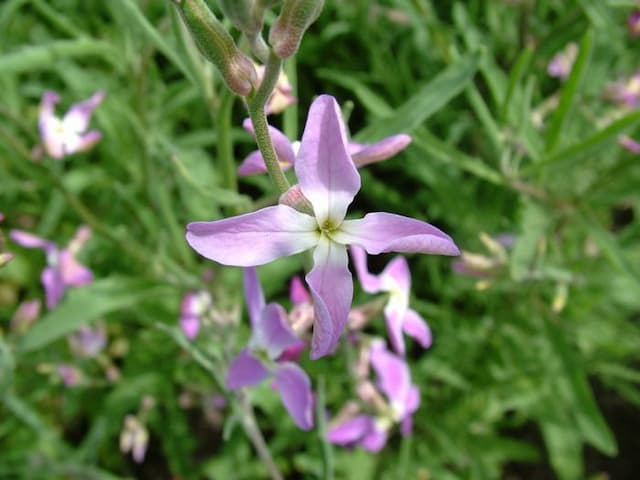
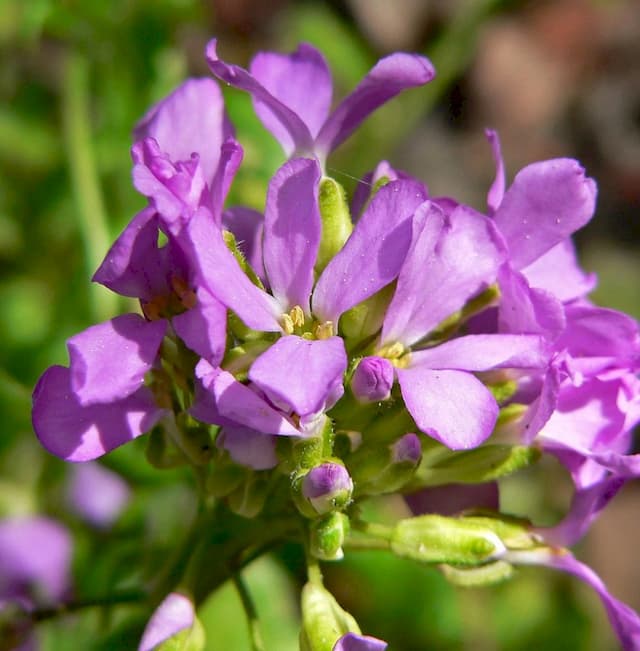


![Aubrieta [Axcent Lilac]](/_next/image?url=https%3A%2F%2Fplants-admin.emdemapps.com%2Fimages%2Fplants%2F%2Fimages%2F604b5e2430fac.png&w=640&q=75)
